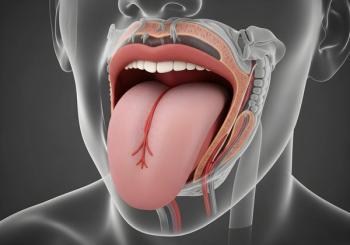
Hormonal Changes May Be the Reason OSA Sex Disparity Narrows as People Age
Decreased hormone levels appear to increase the risk of key symptoms of obstructive sleep apnea (OSA).
Research has established that obstructive sleep apnea is more prevalent in men than in women, with studies suggesting men are roughly twice as likely to be diagnosed with the sleep disorder.
Yet the disparity between men and women tends to narrow wih age. In
“This hypothesis is supported by the finding that women with polycystic ovary syndrome, a disease characterized by comparatively low levels of female sex hormones, are at greater risk for developing sleep apnea,” Triebner and his colleagues said.
While the question of hormones’ role in OSA development has been studied in smaller trials, Triebner and colleagues said there has not yet been a population-level study or large clinical trial examining the question. In their new study, the investigators tried to fill that research gap.
“Considering that OSA may lead to cardiovascular conditions (ischemic heart disease and stroke), which are among the greatest contributors to mortality worldwide, gaining a broader understanding of the reasons for the increased propensity of postmenopausal women to develop OSA is important,” they wrote.
The authors used data from the second follow-up of the European Community Respiratory Health Survey, which ran from 2010-2012 and included data from 15 study centers in seven countries. Altogether, 774 women between the ages of 40 and 67 were studied. The women were analyzed by comparing self reports of sleep apnea to estrogen and progesterone concentrations from serum samples. A number of covariates, including age, body-mass index, and lifestyle factors were also considered. The results suggested that symptoms associated with OSA were more likely when participants had lower levels of certain hormones.
The data showed that a doubling of the serum concentration of estrone was associated with a 19% lower likelihood of snoring. Similarly, doubling progesterone levels led to a 9% decreased risk of snoring.
Among the 551 women who had been told they snored, a doubling of 17β-estradiol, estrone and estrone 3-sulfate was tied to a lower risk of reported breathing irregularities during sleep. The reduction in risk ranged from 17-23%. Finally, among snorers, a doubling of progesterone led to a 12% drop in the likelihood of a participant reporting feeling a choking sensation during sleep within the previous year.
Triebner and colleagues said they did not observe a statistically significant association between “disturbing snoring” and hormones, though they said that might be due to the subjective nature of the characterization of “disturbing.”
The authors said the reason for the apparent link between OSA symptoms and hormones may have to do with the antioxidant role of estrogens.
“As OSA is a disease characterized by intermittent periods of hypoxia resulting in increased oxidant stress and the antioxidant activity of estrogens might mitigate its negative effects,” they wrote.
They said other studies have suggested that hormone therapy can have beneficial effects on OSA.
The investigators said their findings are strengthened by the large size of the study and the fact that it took place across seven countries. However, they said the study also had limitations, such as its cross-sectional design and the self-reported nature of the data. They said longitudinal studies would help clarify the nature and causes of the connections.
“It is crucial to develop strategies to decrease the high prevalence and associated morbidity of OSA and adjusting female sex hormones levels might be the key to accomplish this,” they concluded, “but further longitudinal studies with repeated measures of sex hormones and objective characterization of OSA are required to confirm our findings in other settings.”
Newsletter
Get the latest industry news, event updates, and more from Managed healthcare Executive.


















































